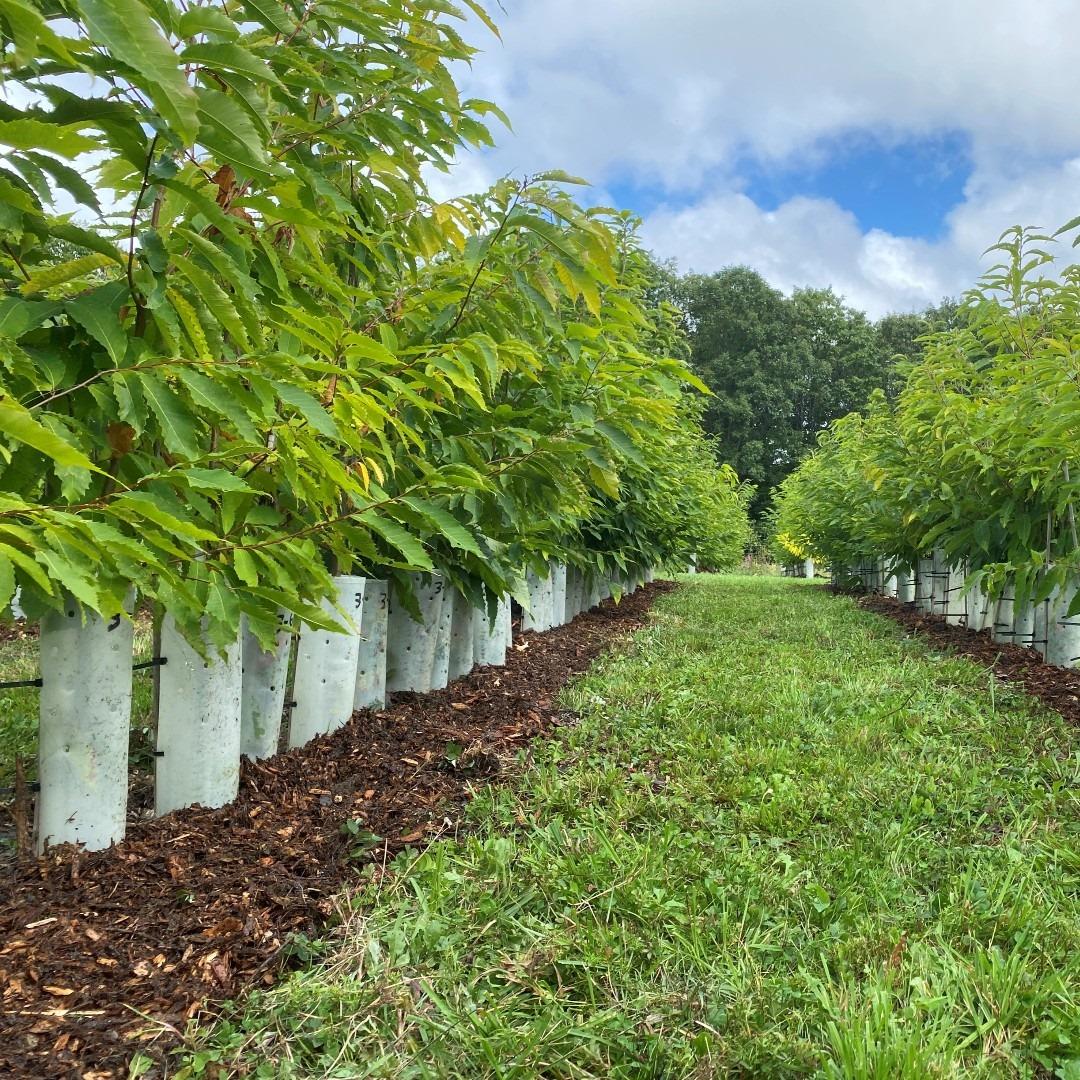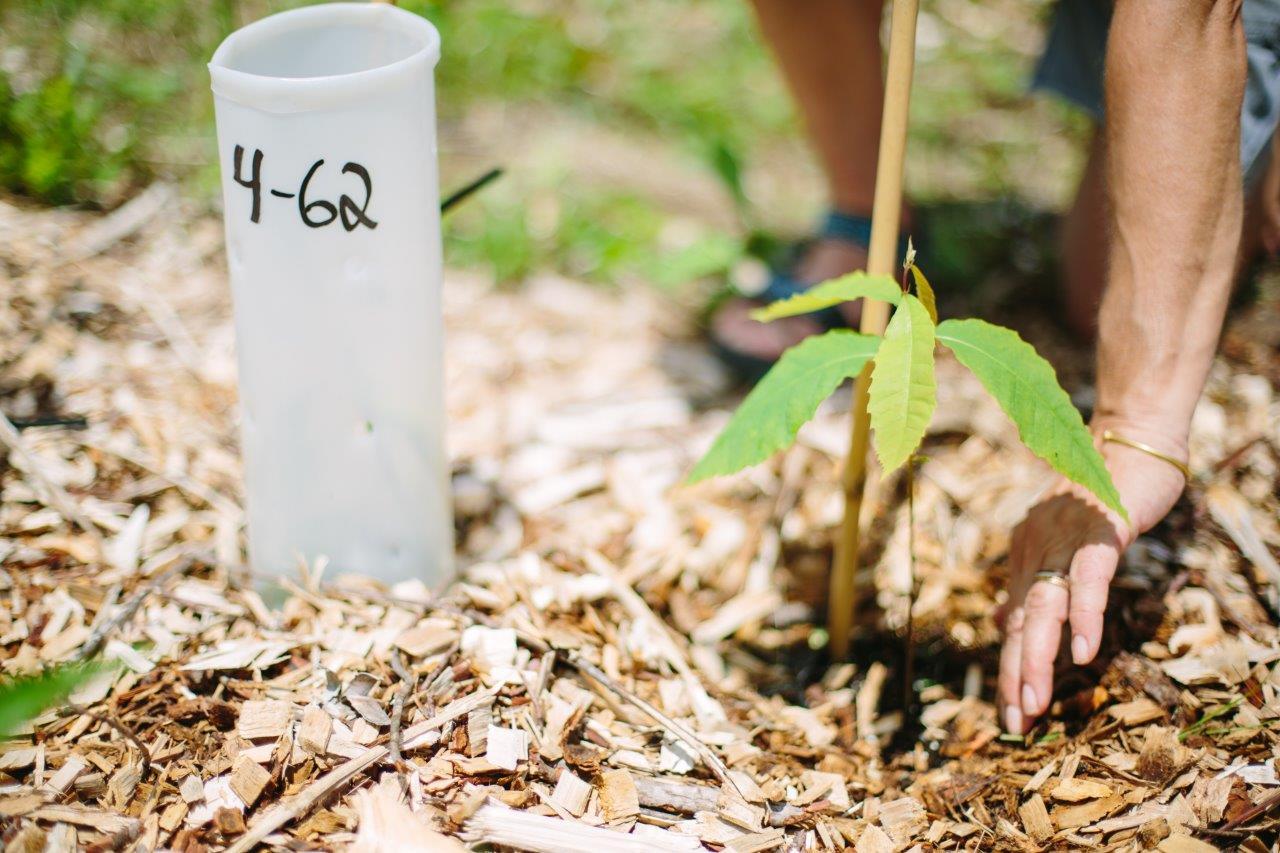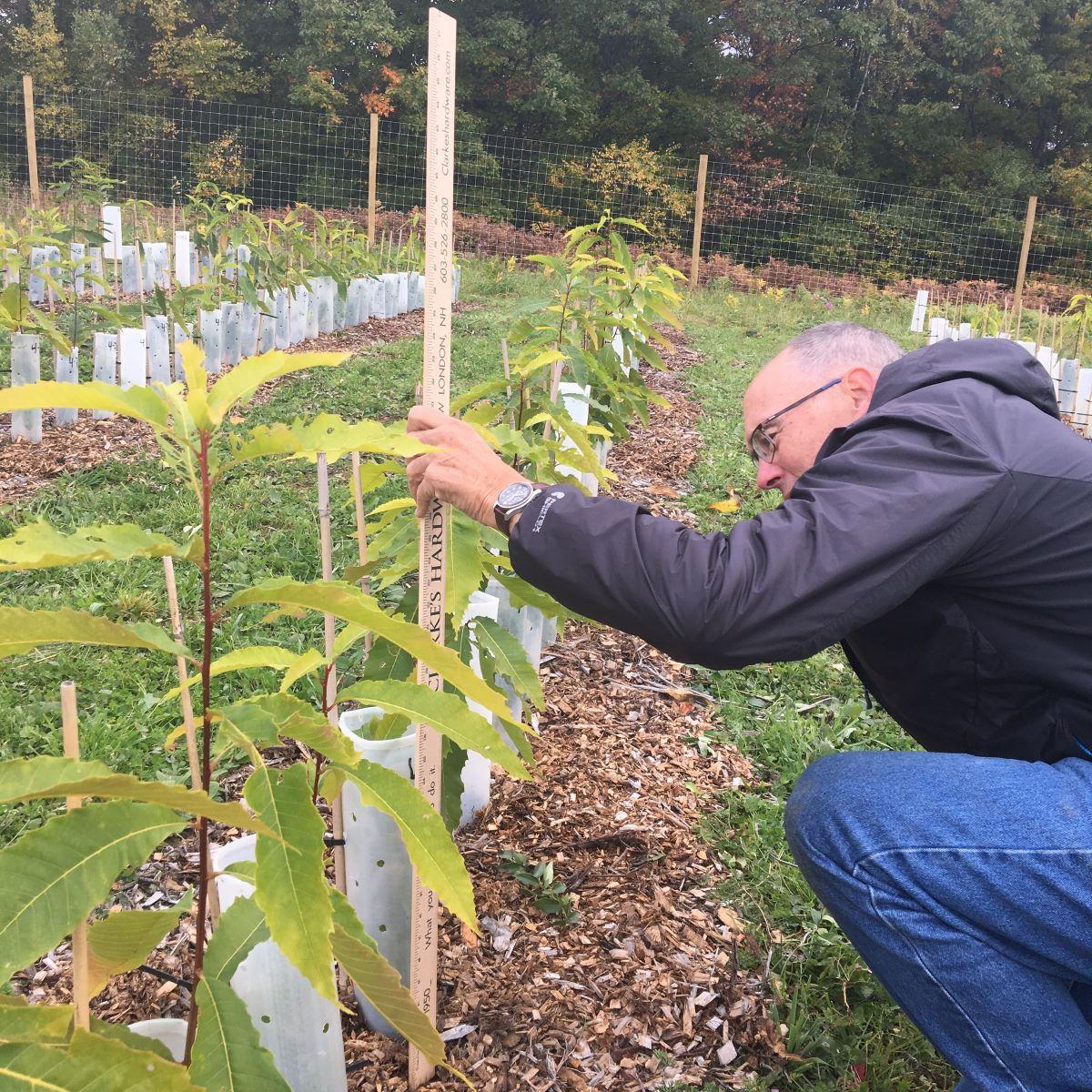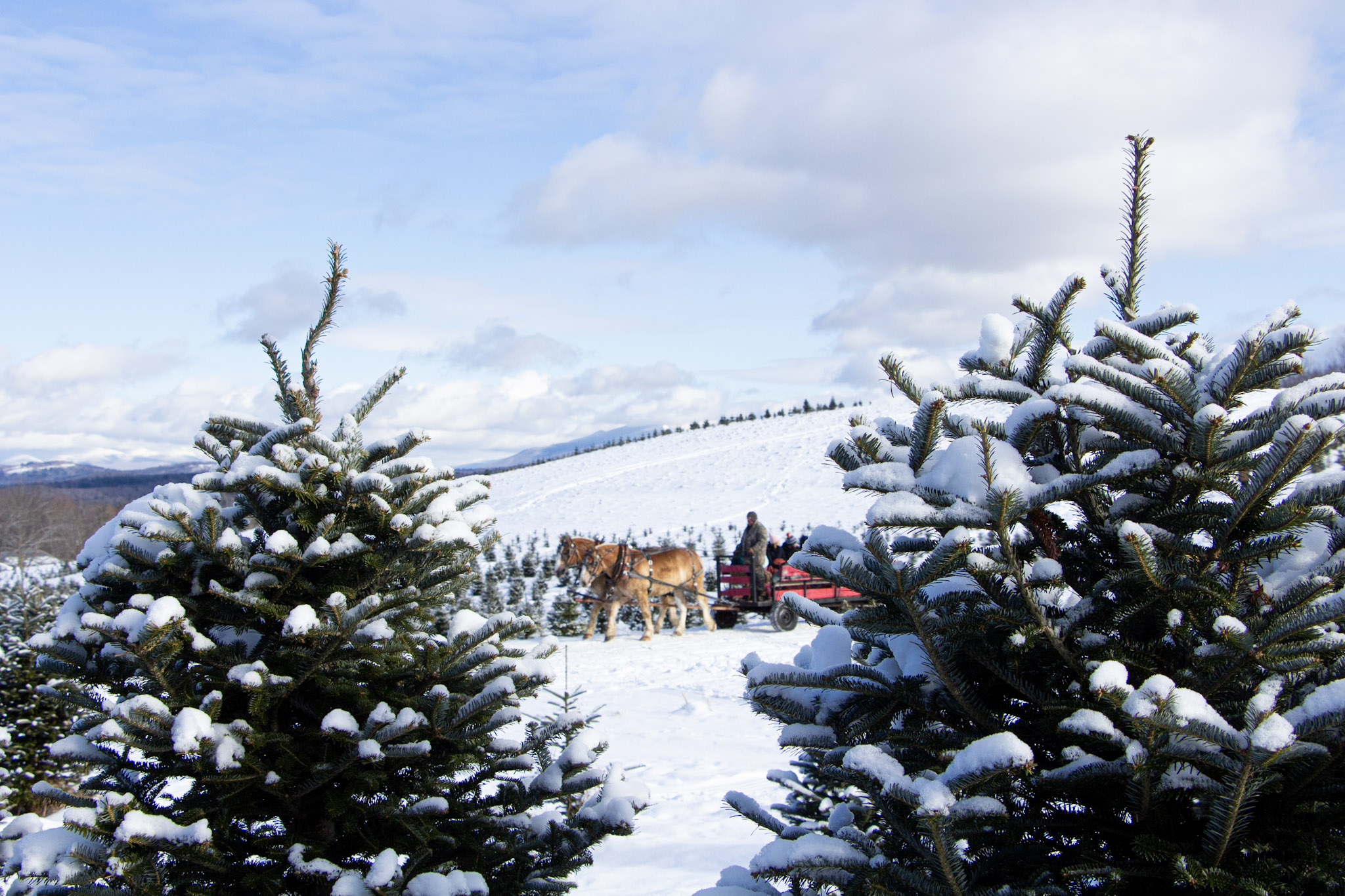
After three years of growth, in Fall 2021, the orchard's chestnut trees were 3-5' high and very tightly packed.
Since 2019, the Forest Society has worked collaboratively with the Vermont/New Hampshire Chapter of American Chestnut Foundation (TACF) to maintain an American chestnut (Castanea dentata) seed orchard at the Tom Rush Forest in Deering, NH. We fenced 1 acre of an existing field with 8’ deer fencing and, with the help of local volunteers, planted 600 nuts in May of 2019.

These chestnuts were hybrid backcrosses with Chinese chestnut (Castanea mollisima), which is resistant to the chestnut blight fungus that has wiped out nearly all mature American chestnuts.
The hope was that a few of these hybrid plants (which are 15/16th American chestnut and 1/16th Chinese chestnut) might end up resistant to blight. Almost all of the 600 nuts sprouted, and thanks to careful watering, weeding, fertilizing and mowing by orchard volunteers, most grew and thrived for the first 4 years.
Of the original 600 chestnuts we planted in 2019, we now have 60 remaining trees in our orchard. For the most part, the sharp decline this year was not because the trees succumbed to chestnut blight, but because we deliberately thinned the orchard heavily this summer, keeping only the largest and healthiest looking specimens so that the remaining trees have ample room to grow.

And they are definitely growing and still thriving - many are over 9 feet tall!
Originally, the plan had been to inoculate all of our trees with the chestnut blight fungus when they reached 5 years old, to hasten the process of determining which were blight resistant. That would have been the summer of 2023, but the cool thing about science projects is that they are always evolving and changing based on the latest available data!
The new directive we received from the American Chestnut Foundation (TACF) was NOT to try and hasten the infection of these trees with the hope that 1 or 2 end up significantly resistant to blight, but to do everything we can to keep these trees healthy as long as possible and get them to breeding maturity.
The good news for staff and volunteers is that we don’t have to prematurely sacrifice our beautiful trees (that was never going to be a fun part of the experiment) and we’re almost there with breeding maturity too—we found our first chestnut in the orchard this fall!

Our trees will be used as “breeding stock” essentially- they can be pollinated with pollen from whatever most resistant varieties of tree TACF has, and the resulting nuts will have increased genetic diversity.
The most exciting news for our orchard at Tom Rush Forest is that it looks like we will be planting more chestnuts in 2024! The VT/NH chapter of TACF has almost 400 chestnuts available for planting that were produced by crossing their most resistant varieties to date.
Tools to uncover blight resistance, such as genetic sequencing, have gotten much more sophisticated since our 2018 planting, so these 400 nuts will be started in pots in greenhouses and their DNA analyzed for genetic markers known to convey at least some blight resistance.
Only the most promising seedlings (likely fewer than 50) will be chosen for planting at Tom Rush in Fall 2024. There is every hope that this new batch of trees will be more blight resistant than our current 60, though the current trees still look amazing thanks to all the careful tending the past 5 years.
Many have heard the recent news about TACF’s retraction of support for the genetically engineered chestnut variety Darling 58 (or D58) that has been developed by SUNY ESF and is currently under review for de-regulation by the USDA and FDA.
There is a lot more explanation about this topic here on The American Chestnut Foundation’s website, which I encourage you to read through. Our chestnut trees at Tom Rush Forest are not D58 or genetically engineered plants, and neither are the trees we’ll be planting in 2024.
TACF has not abandoned development of a GMO chestnut as one potential strategy in their goal of achieving successful reintroduction of American chestnut trees into our forests, but it is only one strategic avenue out of many. Our orchard at Tom Rush and other seed and stock orchards like it represent another key approach to working towards blight resistance, one that is now more important than ever.
As we have already experienced in our few short years of tending the orchard, we fully expect the “plans” to continue to evolve and change in the future with new and improving science- all part of the fun!
